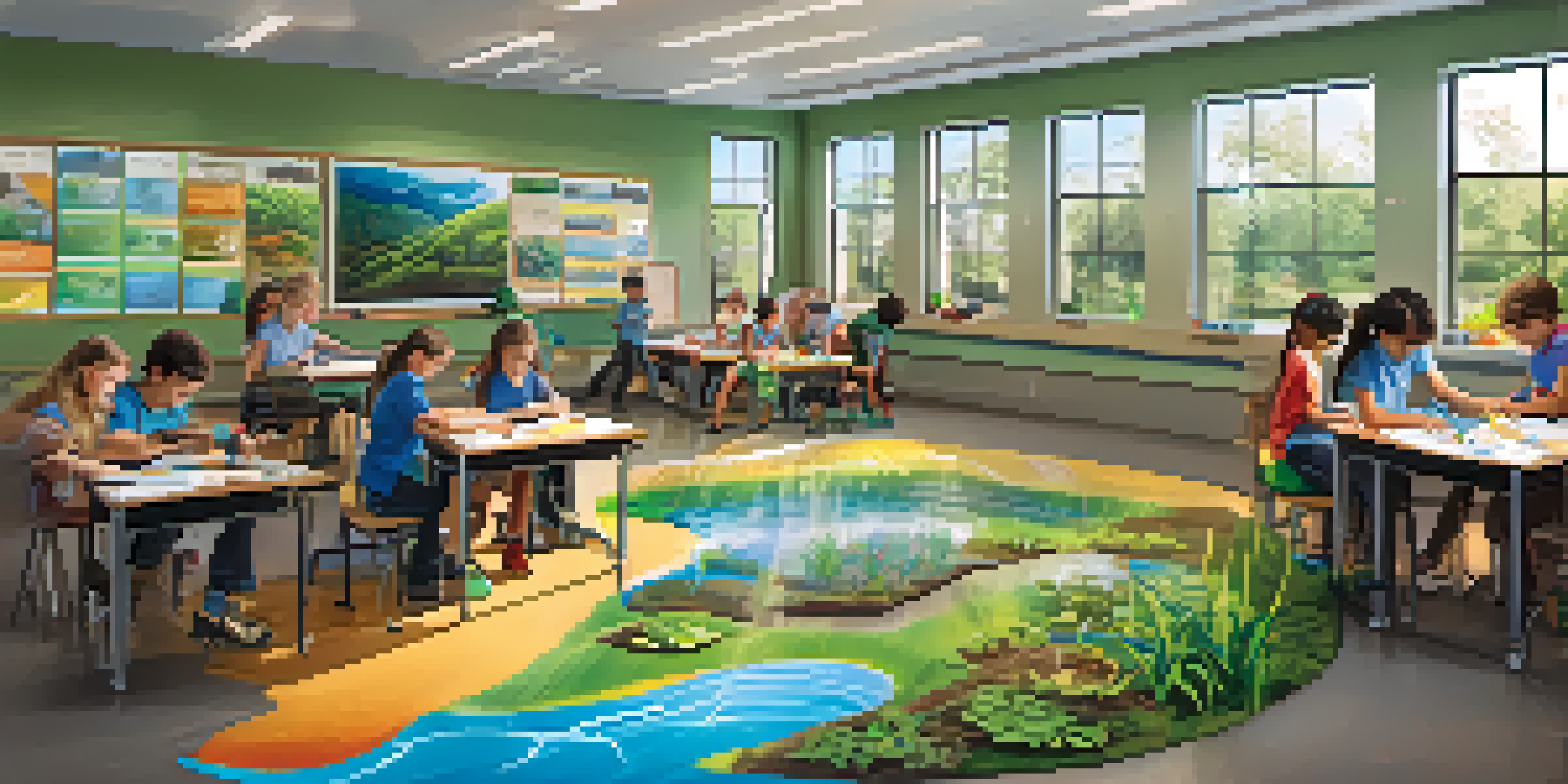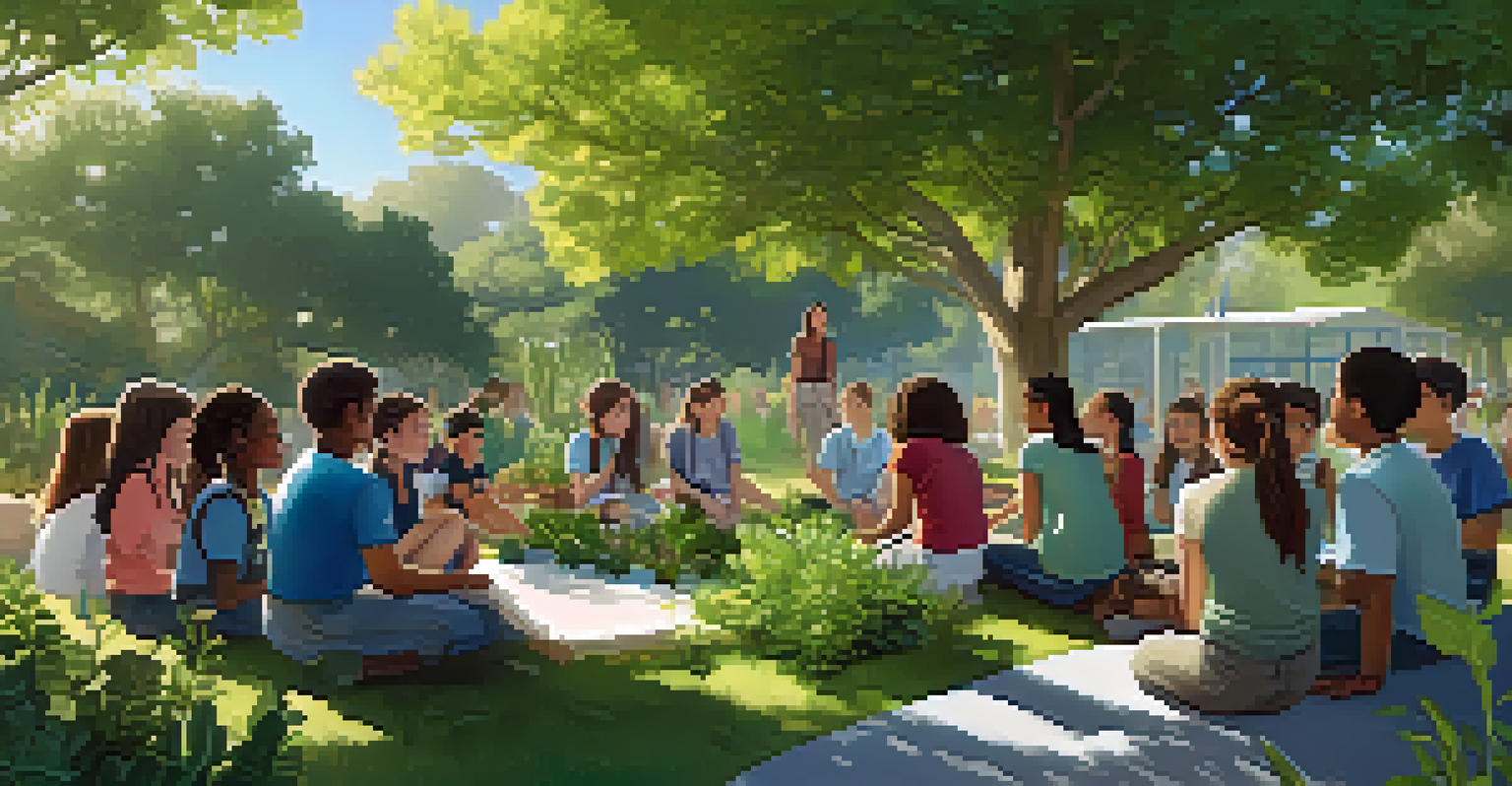Water Conservation Education Programs in San Diego Schools

Importance of Water Conservation in San Diego
San Diego, with its beautiful beaches and warm climate, faces unique water challenges. The region's limited rainfall and growing population make water conservation crucial. Educating students about the importance of conserving water helps ensure a sustainable future for our community.
Water is the driving force of all nature.
By teaching water conservation in schools, children learn to appreciate this precious resource. Understanding the value of water encourages responsible usage at home and in their daily lives. These early lessons can lead to lifelong habits that benefit both families and the environment.
Moreover, as students become water conservation advocates, they can influence their peers and families. This ripple effect amplifies the impact of educational programs, fostering a culture of sustainability throughout the community.
Overview of San Diego’s Water Conservation Programs
San Diego offers a variety of water conservation education programs aimed at students of all ages. These programs often include interactive workshops, field trips, and hands-on activities. Schools collaborate with local water agencies to create engaging curricula that resonate with students.

One standout initiative is the 'WaterSmart' program, which provides resources for teachers and students. This program includes lessons on the water cycle, conservation techniques, and practical projects like creating water-efficient gardens. By incorporating real-world applications, students can see the relevance of their education.
Teaching Kids Water Conservation
Educating students about water conservation helps instill lifelong habits that promote responsible usage at home and in the community.
These programs often adapt to meet the needs of diverse learners, ensuring inclusivity. By using multimedia resources and engaging teaching methods, they make learning about water conservation both fun and informative.
Curriculum Integration of Water Conservation Concepts
Integrating water conservation into the curriculum helps students understand its relevance across various subjects. For instance, science classes can explore the water cycle, while math lessons can involve calculating water usage. This interdisciplinary approach fosters a deeper understanding of the topic.
The greatest threat to our planet is the belief that someone else will save it.
Additionally, social studies can highlight the history of water management in San Diego, emphasizing the challenges the region faces. By connecting water conservation to different subjects, educators can create a more holistic learning experience for students.
Such integration not only enhances academic learning but also instills a sense of responsibility. Students begin to see themselves as active participants in the sustainability conversation, empowered to make a difference.
Hands-On Activities Promoting Water Conservation
Hands-on activities are a key component of water conservation education in San Diego schools. Students might participate in projects like building rain gardens or creating water-efficient landscapes. These activities not only teach practical skills but also foster teamwork and creativity.
Field trips to local water treatment facilities or natural reserves provide students with real-world insights. By observing how water is sourced, treated, and conserved, students gain a tangible understanding of the processes involved. Such experiences can ignite a passion for environmental stewardship.
Hands-On Learning Experiences
Engaging in hands-on activities, like building rain gardens, allows students to apply their knowledge practically and fosters a deeper connection to environmental stewardship.
These engaging activities help students see the direct impact of their actions. When they apply what they've learned outside the classroom, the lessons become more meaningful and memorable.
Role of Community Partnerships in Education
Community partnerships play a vital role in enhancing water conservation education programs in San Diego. Local water agencies, non-profits, and environmental organizations often collaborate with schools to provide resources and expertise. This collaboration enriches the educational experience and expands the reach of conservation efforts.
For example, organizations like the San Diego County Water Authority offer workshops and materials designed specifically for teachers. These resources help educators effectively communicate complex concepts in an engaging manner. Community involvement ensures that programs are relevant and impactful.
Moreover, partnerships can lead to joint community events, such as clean-up days or conservation fairs. These events not only educate students but also foster a sense of community and shared responsibility for local water resources.
Student-Led Initiatives and Leadership Opportunities
Student-led initiatives are a fantastic way to empower young learners in water conservation efforts. Many schools encourage students to form green clubs or conservation committees, allowing them to take charge of projects. These opportunities help students develop leadership skills while actively promoting water-saving practices.
For instance, students might conduct water audits at their schools, identifying areas for improvement. By leading these initiatives, they learn problem-solving and critical thinking skills, all while making a tangible difference in their school environment.
Community Partnerships Enhance Learning
Collaborations with local organizations enrich water conservation education, providing valuable resources and fostering a shared responsibility for water preservation.
Such initiatives also promote teamwork and collaboration among peers. As students work together toward common goals, they build camaraderie and a sense of ownership over their conservation efforts.
Impact of Water Conservation Education on Future Generations
The impact of water conservation education extends far beyond the classroom. By instilling these values in students today, we prepare them to be responsible stewards of water in the future. They carry these lessons into adulthood, influencing their families, communities, and workplaces.
As these young leaders grow and enter various professions, their understanding of water conservation can shape policies and practices across industries. Whether in agriculture, urban planning, or environmental science, informed decisions can lead to sustainable solutions.

Ultimately, investing in water conservation education today fosters a generation committed to protecting our most vital resource. The knowledge and habits formed in school can lead to innovative approaches to water management and conservation in the years to come.